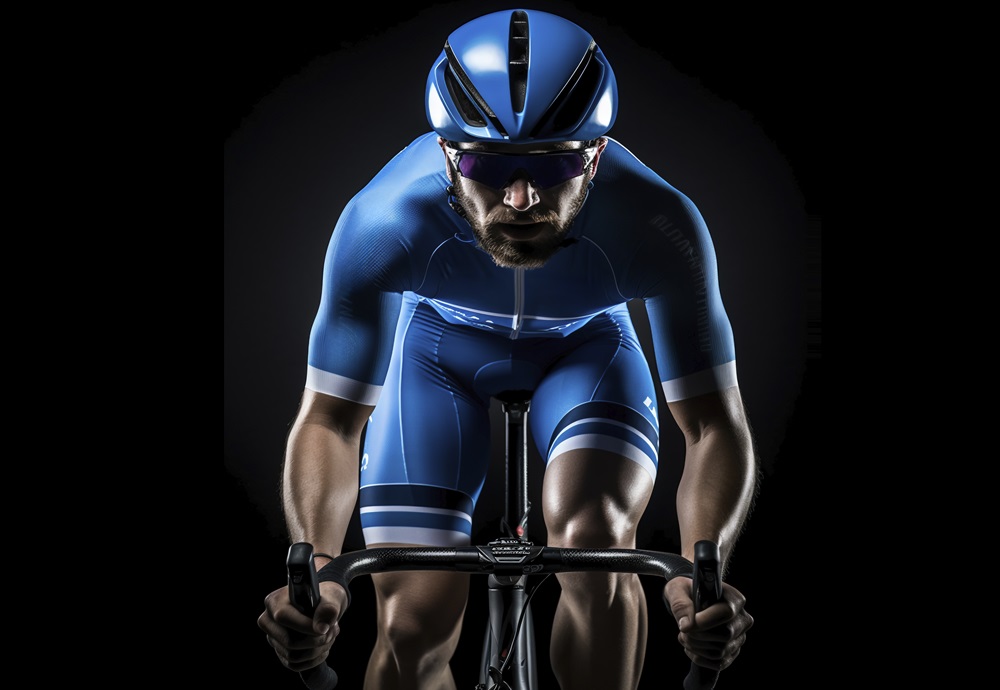Hunting for deals during a cycling jersey sale is exciting, but the weather resistance of those marked-down items might be more important than the price tag.
When shopping for discounted cycling clothes, understanding how weather protection affects both short-term comfort and long-term value can save you money and frustration down the road.
What Makes Cycling Gear Weather Resistant?
Weather resistance in cycling clothes isn’t just about staying dry. It’s about how the materials protect you from various elements while maintaining comfort during your ride.
The quality of weather-resistant cycling gear depends on three main factors: the fabric technology, construction methods, and special treatments applied to the material.
When these elements work together, they create a barrier between your body and whatever Mother Nature throws at you.
Fabric technologies like Gore-Tex, eVent, and similar membranes create a microscopic shield that blocks water droplets while allowing sweat vapor to escape. This balance between waterproofing and breathability is crucial for comfort during intense rides.
The Real Cost of Cheaper Weather Protection
When cycling attire gets marked down, it’s tempting to grab what seems like a great deal. But understanding the relationship between price and performance helps you make better decisions.
| Protection Level | Average Lifespan | Cost Per Season | Performance in Elements |
| Basic (DWR only) | 1-2 seasons | $25-40 | Light rain, mild winds |
| Mid-range | 2-3 seasons | $40-60 | Moderate rain, cool temperatures |
| Premium | 3-5+ seasons | $60-90 | Heavy downpours, cold winds, snow |
The numbers above represent typical values based on regular use (2-3 rides per week) and proper care.
When comparing the cost per season, those premium items on sale often provide better value than their budget counterparts at full price.
A $200 jacket marked down to $120 that lasts four seasons ($30/season) is a better investment than a $80 jacket that needs replacement after one year.
How Weather Resistance Degrades Over Time?
Even the best weather-resistant treatments don’t last forever. Understanding how these protective features wear out helps you judge the true value of marked-down gear.
The most common protective treatment on cycling clothes is DWR (Durable Water Repellent), which makes water bead up and roll off instead of soaking in. This coating naturally degrades through:
- Regular washing
- Abrasion from riding
- Exposure to dirt and body oils
- UV radiation from sunlight
Premium cycling gear typically uses higher-quality DWR treatments that last longer before needing reapplication.
When shopping clearance racks, gently test water resistance by placing a few drops of water on the material – they should bead up rather than soak in.
What to Look For When Buying Discounted Weather-Resistant Gear
When browsing that cycling jersey sale, pay attention to these features that signal good weather resistance that will last:
Sealed or taped seams indicate higher-quality construction that prevents water from seeping through the stitching. Run your fingers along the inside seams – if you feel tape or special sealing, that’s a good sign.
Multi-panel construction with strategic placement of different materials enhances both weather protection and comfort. More panels usually means more thoughtful design.
Adjustable features like cuffs, collars, and hems let you seal out the elements and customize fit. These details make a huge difference in real-world weather protection.
Some premium weather-resistant features might not be immediately visible, so check product descriptions or ask knowledgeable staff about specific technologies.

Caring for Weather-Resistant Cycling Clothes
The value of discounted weather-resistant gear depends partly on how you maintain it. Proper care can double the effective lifespan of your cycling clothes, making that sale price an even better deal.
Wash your gear using technical fabric cleaners rather than regular detergents. Regular detergents leave residues that can clog the microscopic pores in breathable fabrics and damage water-resistant treatments.
After about 15-20 washes, you might need to reapply DWR treatment. Many spray-on or wash-in products can restore weather resistance to nearly new levels at a fraction of the cost of replacement.
Beyond the Price Tag
Weather resistance in cycling attire isn’t just about staying comfortable – it’s about safety and extending your riding season.
When you can confidently ride in more conditions, you get more value from every piece of gear.
The next time you’re tempted by deeply discounted cycling clothes, remember that the true value comes from the balance of initial cost, durability, and performance. Sometimes, the slightly more expensive option on the sale rack offers the better long-term value.


